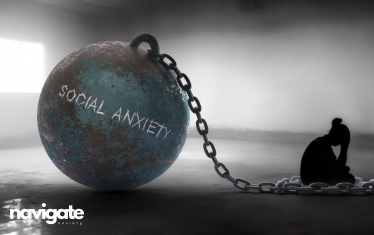When Help Is Hard to Find: Why AI Mental Health Support Matters — And What Makes Some Tools Truly Supportive
Posted on: May 21, 2025
Introduction
In a world where NHS waitlists for mental health care continue to grow — with over 1 million people in England alone waiting for treatment — more individuals, parents, and caregivers are turning to AI tools to find relief, answers, or simply someone to “talk” to.
A recent BBC article, “My AI Therapist Got Me Through Dark Times”, brings to light the very real role AI is beginning to play in people’s mental health journeys. But it also reveals something equally important: not all AI tools are the same — and not all are built for the sensitive, emotional complexity of mental health.
The Mental Health Crisis in Numbers
- In April 2024, 426,000 people were referred to NHS mental health services — a 40% increase in just five years.
- 1.2 million people are on waiting lists.
- Young people and caregivers are often left without immediate access to professional help.
- Many are turning to AI — not to replace therapy, but as a stopgap, a support, a survival tool.
The Rise of AI Mental Health Tools: Hope and Hesitation
AI chatbots like Wysa are now being adopted in over 30 NHS regions. For some, they offer constant availability, judgment-free conversations, and a sense of control during overwhelming moments.
But here’s where things get murky: the BBC article also references a tragic case where a non-clinical, general-purpose chatbot was used for emotional support — with devastating consequences.
This isn’t just a story about AI. It’s a story about the difference between a tool built for empathy — and a tool built for engagement.
Why Not All AI Is Equal: The Navigate Difference
At Navigate, we didn’t set out to create “just another chatbot.” We built Navigate Anxiety, Navigate Chronic Pain, Navigate Dementia, and Navigate Menopause with the following principles in mind:
Built for Specific Challenges
- Each Navigate product is crafted for one specific health journey, not general-purpose conversation.
Rooted in Therapeutic Frameworks
- Navigate draws from CBT, mindfulness, trauma-informed principles, and lived experience — with zero fluff or filler.
Designed for Compassionate Dialogue
- Our AI doesn’t just give advice. It listens. It reflects. It empowers users with insight and comfort.
Data Security and Emotional Safety First
- Unlike generic bots, we don’t guess with your data or responses. Navigate is intentionally designed to reduce risk and increase emotional safety — especially for vulnerable users.
Who Navigate Supports
💙 Parents of teens with anxiety:
“I was lost. I didn’t know how to help my daughter. Navigate helped me understand her experience — and gave us a place to start healing.”
💙 Adults living with chronic pain:
“Most people don’t get what daily pain does to your mental health. Navigate doesn’t just offer tips — it gets it.”
💙 Caregivers of people with dementia:
“It’s lonely. Exhausting. I didn’t want to dump it all on friends. Navigate was there at 2am when I needed to cry and be heard.”
AI Should Be a Tool — Not a Risk
We agree with the BBC article: AI has the power to offer immediate, non-judgmental support to millions in need. But to do that effectively and ethically, it must be designed for that purpose.
Navigate isn’t a replacement for therapy. It’s a lifeline while you wait. A daily check-in. A source of relief and empowerment.
If you’re on a waitlist, caring for someone who’s struggling, or just looking for support — Navigate is here for you.
Try it free. No judgment. No pressure. Just support that feels human.
🌐 NavigateAnxiety.org | NavigateChronicPain.org | NavigateDementia.org | NavigateMenopause.org





